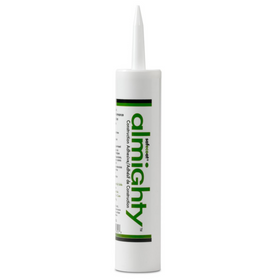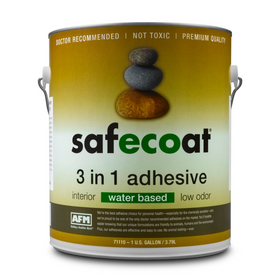
Modernist Home: Artisanal Construction With Contemporary Architecture
Last Updated: Mar 19, 2025Guatemala, like many areas of the world, has seen some of the traditional vernacular architectural traditions of its past, give way to more desirable building practices. The enormous amount of economic remittance sent back from migrants in the United States is primarily invested in shoddily built cinder block homes. These homes are widely considered by the local population to be a sign of progress and wealth as they replace the more traditional adobe and wooden homes that housed their ancestors for centuries.
Cement and cinderblock construction, when done correctly, certainly offer more home protection in an area of the world where earthquakes are an almost weekly occurrence. The aesthetic and sustainability qualities of these types of homes are often an afterthought, at best.
Table of Contents
- Designing for Beauty and Functionality
- Local, Yet Modern
- Three Living Spaces on One Plot of Land

Above the shoreline of Lake Atitlán in central Guatemala, however, a unique architectural design immediately catches the eye. Susan Marie Tabush, along with her husband Daniel Galvez Tabush and her son Sergio Galvez Thompson, offers an example of how contemporary construction techniques and modernist design can create a functional, sustainable, and aesthetically pleasing home.
Designing for Beauty and Functionality
Daniel and Sergio are architects. They work together at their Guatemalan-based architectural studio Estudio Creativo. Their work focuses on the “sensory community between the designed space, the client and the user.”
In 2010, they began work on what was initially intended to be a vacation home for their family. As the design process progressed, the beautiful plot of land on the south shore of Lake Atitlán eventually came to house three separate living spaces surrounded by beautiful gardens landscaped with native plants.

According to Daniel, the property is now home to “a series of houses that combine historic artisanal construction with contemporary architecture design. These houses are made of concrete, local carved stone, wood, and local furniture textiles; they are among the first to be completely handmade in this region.”
Due to challenges that came with building in a somewhat remote part of the Lake Atitlán region, the family decided to construct the buildings on-site without prefab building materials. The local contractor who worked with the Stabush family stated that “We are thrilled to be part of this construction because it’s the first house that we build on-site without using prefabricated blocks.”
Prefab homes do offer some sustainability benefits, especially in the North American housing market. In rural Guatemala, however, the Stabush family wanted to involve the local community. Through building on-site, they were able to employ more local workers and maintain their investment within the community.

Local, Yet Modern
The three towering volcanoes surrounding Lake Atitlan, have contributed to the area’s geology and topography over the eons. Volcanic rock is prominent. The Stabush family wanted to incorporate this beautiful rock as part of the construction.

Due to the undulating terrain of the land, the family decided to build three separate structures that allowed for minimal land disturbance during the building process. The foundations for the two larger homes (called el Bunker and el Capricho), Sergio says, were already established on the plot of land when they purchased the property. Instead of tearing up these old foundations and building new ones, Sergio says, the family decided to use the existing foundations to impact the landscape as little as possible. This strategy also allowed Susan to design a beautiful, natural garden that connects the three living spaces and acts as the main focus of the site.

The intention was to create “invisible architecture,” Sergio says. “These houses blend with the environment thanks to the use of materials in their natural state. This approach forces us to interact with the local landscape at all times.” From the native landscaping around the homes to the structures’ open-plan interiors with abundant views to the outdoors, the overall design process focused on blending environment, architecture, and livability to create a holistic experience.

“The architecture of the houses utilizes artisanal construction along with modern design and construction processes,” Daniel adds. “This constitutes a concept of invisible architecture that sought to affect the terrain and the natural environment as little as possible.” The use of raw building materials such as concrete, stone, and wood gives the homes a natural aesthetic while blending contemporary design with regional modernist aesthetics.

When pouring the concrete for the walls, wooden forms were used. Instead of adding a final plaster layer, Sergio and Daniel decided to leave the wood grain impregnated on the molten concrete. This “unfinished” aesthetic adds a touch of natural beauty to the modernist construction.

“The molten walls and the orientation of the windows allow the houses to respond to the solar and wind forces,” Daniel adds. “This allows us to keep the houses cool during the day and cozy at night.” Even in a country known as the “land of the eternal spring,” passive solar design plays a vital role in keeping the homes at a comfortable temperature year-round.
Three Living Spaces on One Plot of Land
The Stabush family all contributed their ideas to develop the plot of land. El Capricho, the main home, was designed by Sergio. The home has unique geometrical windows and an outdoor living area with a natural wood-burning fireplace. El Bunker is named due to its resemblance to a German war bunker. It has a beautiful wooden terrace overlooking the lake. The family even sought to incorporate recycled elements into the property design.
Building Materials
Shop high-performance building materials that are vetted for benefits to your health, your pocketbook, and the planet.

AFM Safecoat Almighty Adhesive Case of 12
AFM Safecoat
In Stock

AFM Safecoat 3 in 1 Adhesive
AFM Safecoat
In Stock

Quickscrews Cabinet Install Screws
Quickscrews
In Stock

AutoSlide Automatic Sliding Door System
Autoslide
Out of Stock
2 Colors

Autoslide Smart Tag Pet Door Kit
Autoslide
Out of Stock
2 Colors

AutoSlide Elite iLock Smart Tag Pet Door System
Autoslide
Out of Stock
2 Colors

Quickscrews Pan Head Pocket Hole Screws
Quickscrews
In Stock

Autoslide Elite Smart Tag Pet Door Kit
Autoslide
Out of Stock
2 Colors

Autoslide Motion Activated Pet Door System
Autoslide
Out of Stock
2 Colors

Quickscrews Square Flat Head Wood and Particle Board Screws
Quickscrews
In Stock

A 1955 Waggoner Willis Jeep was also remodeled into a unique cabin, “Sleep in a Jeep,” that the family has listed on Airbnb. According to the family’s listing, “The Waggoner Willis Jeep was the most famous family and service vehicle in history and an icon of the vehicular era,” and is part of a family project “to recycle iconic and famous cars.” Bright red, the jeep has views to the lake, and it’s a private dock. The interior is lined with cypress wood. Surrounding the “Jeep-cabin” is a small kitchenette, bathroom, and fire pit to complete the livable vacation alternative.

Between the three living spaces, a shared garden acts as a natural connector. Volcanic rock stairs and platforms, interspersed with lush tropical vegetation, and stunning views of the lake make for an idyllic setting. Hammocks are placed around the garden area to invite relaxation and deepen a sense of connection to the place.

The Stabush family visits their vacation property as often as possible, sharing it with other interested parties or vacationers when they’re not on the premises.
Tobias Roberts
Tobias runs an agroecology farm and a natural building collective in the mountains of El Salvador. He specializes in earthen construction methods and uses permaculture design methods to integrate structures into the sustainability of the landscape.
